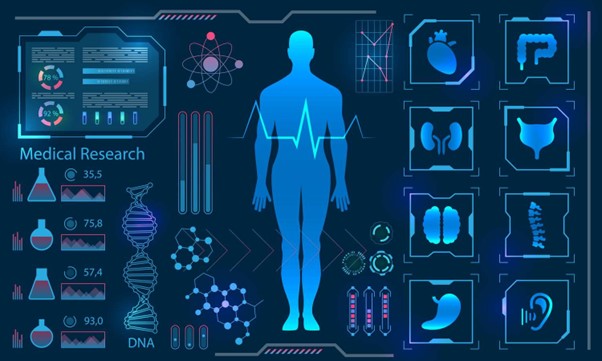Digital Twins of the Human Body: Predicting Health Risks Before They Happen
Imagine if doctors could see a virtual version of your body — a living, evolving digital model that mimics your organs, tissues, and biological processes in real time. This isn’t science fiction. With advances in computing, sensors, and artificial intelligence, digital twins of the human body are becoming a reality.
A digital twin is essentially a virtual replica of a physical entity. In healthcare, this means creating a detailed, data-driven model of a patient’s body, allowing clinicians to simulate treatments, predict disease progression, and tailor interventions before problems even appear. It’s the next frontier in personalized medicine.
How Digital Twins Work
Creating a digital twin of the human body involves integrating multiple layers of data:
-
Genetic Information: DNA sequencing provides insights into hereditary risks.
-
Medical History: Past illnesses, treatments, and lab results help build an accurate health profile.
-
Wearable and Sensor Data: Devices track heart rate, blood pressure, sleep patterns, and more in real time.
-
Imaging and Scans: MRI, CT, and other imaging techniques help model organs and tissues in 3D.
-
Lifestyle and Environment: Diet, activity levels, exposure to pollutants, and other factors influence health predictions.
All this data is fed into advanced computational models that simulate how your body responds to various conditions or treatments. The twin evolves with you, continuously updating as new information is collected, making it a dynamic reflection of your real body.
Predicting Disease Before It Strikes
The most exciting potential of digital twins lies in preventive medicine. By running simulations, doctors can identify potential health risks before they manifest as disease. Examples include:
-
Heart Disease: Predicting how arterial plaque buildup might progress and testing the impact of lifestyle changes or medications.
-
Diabetes: Simulating blood sugar responses to different diets or activity patterns to optimize management strategies.
-
Cancer: Modeling tumor growth and response to targeted therapies, enabling earlier interventions.
-
Neurological Disorders: Tracking brain changes over time to anticipate conditions like Alzheimer’s or Parkinson’s.
By predicting disease before symptoms appear, digital twins enable early, personalized interventions, potentially saving lives and reducing healthcare costs.
Digital Twins in Treatment Planning
Digital twins aren’t just for prevention — they also transform treatment strategies:
-
Surgical Planning: Surgeons can rehearse complex procedures on a patient’s digital twin to reduce risks and improve outcomes.
-
Drug Testing: Simulated responses allow clinicians to predict which medications are most effective for a specific patient, minimizing trial-and-error.
-
Chronic Disease Management: Continuous monitoring and simulations help adjust treatments dynamically, improving long-term care.
The result is smarter, safer, and more efficient healthcare, tailored to the individual rather than relying on generalized protocols.
How Technology Makes It Possible
Several technologies converge to make human digital twins feasible:
-
Artificial Intelligence (AI): Machine learning algorithms analyze massive datasets to predict disease and simulate treatment outcomes.
-
Big Data Analytics: Integration of genetic, medical, and lifestyle data requires robust computational power.
-
3D Modeling and Visualization: High-resolution scans enable realistic digital representations of organs and tissues.
-
Wearables and IoT Devices: Real-time monitoring provides the ongoing data needed to update the twin continuously.
Together, these tools allow healthcare providers to create living models of patients that evolve with them, offering insights that were impossible just a few years ago.
Challenges and Ethical Considerations
Despite its promise, human digital twins face challenges:
-
Data Privacy: The creation of a digital twin involves extremely sensitive personal data. Ensuring this information is secure is critical.
-
Accuracy and Reliability: Models are only as good as the data they receive. Incomplete or inaccurate data can lead to flawed predictions.
-
Accessibility: Advanced modeling technology may initially be available only to well-funded hospitals or research institutions, raising equity concerns.
-
Ethical Use: Decisions based on digital twins must consider patient consent, transparency, and fairness.
Balancing innovation with safety, privacy, and ethical responsibility is essential as digital twin technology enters mainstream healthcare.
The Future of Personalized Medicine
Looking ahead, digital twins could redefine the doctor-patient relationship. Patients could explore virtual versions of themselves, understand health risks, and co-design treatment plans with clinicians. Public health officials could use aggregated twins to model disease spread or evaluate the effectiveness of interventions on a population scale.
In the longer term, digital twins might integrate synthetic biology, AI-driven drug design, and wearable nanotechnology, creating fully predictive, adaptive health ecosystems that respond in real time to changes in the body.
The Bottom Line
Digital twins of the human body represent a radical shift in healthcare, moving from reactive treatment to proactive, personalized, and predictive medicine. By simulating disease, testing interventions, and continuously monitoring health, they give doctors and patients a powerful tool to stay ahead of illness rather than merely reacting to it.
In this era of personalized, data-driven healthcare, your digital twin might one day help you live longer, healthier, and with fewer surprises from your own body.



